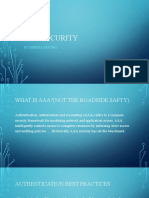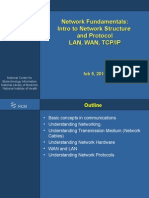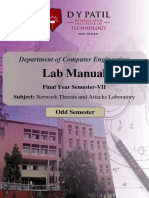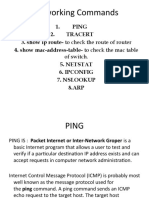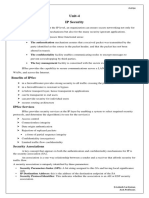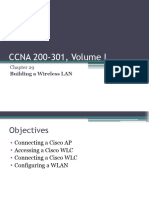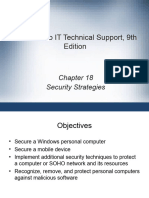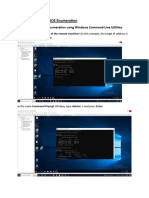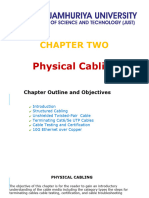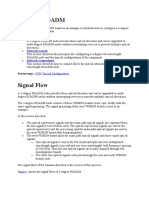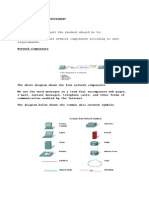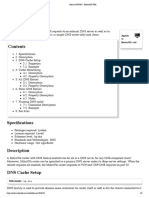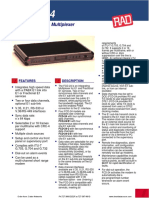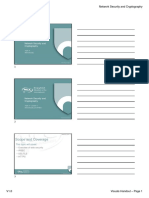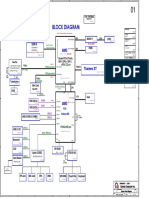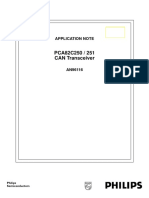0% found this document useful (0 votes)
231 views70 pagesEthernet Cabling Essentials
This document provides an overview of a lesson on deploying Ethernet cabling. It discusses Ethernet standards including 10BASE-T, 100BASE-TX, and gigabit Ethernet. It also summarizes the different types of copper cabling, including unshielded twisted pair, shielded twisted pair, Cat5/6 cable standards, and connector types like RJ-45 and RJ-11. The document also covers copper termination standards and considerations for plenum and riser rated cables.
Uploaded by
Anthony KehCopyright
© © All Rights Reserved
We take content rights seriously. If you suspect this is your content, claim it here.
Available Formats
Download as PDF, TXT or read online on Scribd
0% found this document useful (0 votes)
231 views70 pagesEthernet Cabling Essentials
This document provides an overview of a lesson on deploying Ethernet cabling. It discusses Ethernet standards including 10BASE-T, 100BASE-TX, and gigabit Ethernet. It also summarizes the different types of copper cabling, including unshielded twisted pair, shielded twisted pair, Cat5/6 cable standards, and connector types like RJ-45 and RJ-11. The document also covers copper termination standards and considerations for plenum and riser rated cables.
Uploaded by
Anthony KehCopyright
© © All Rights Reserved
We take content rights seriously. If you suspect this is your content, claim it here.
Available Formats
Download as PDF, TXT or read online on Scribd
/ 70
